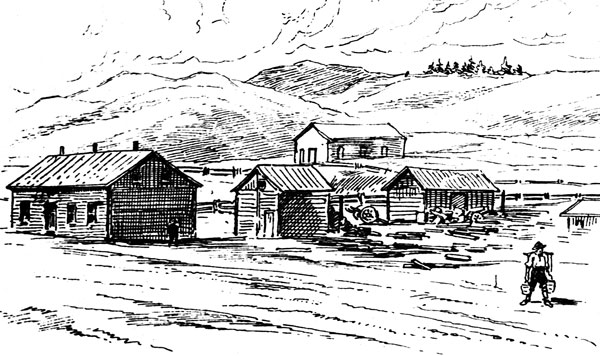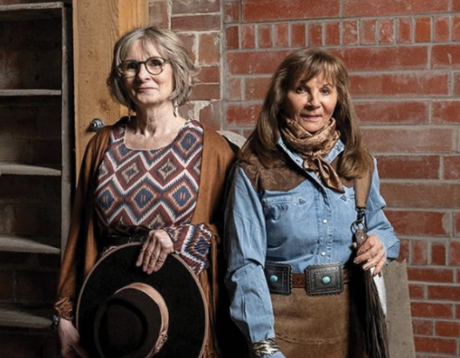
Cattle Across the Great Divide
Strange as it may seem, the first cattle to arrive in Calgary, at one time the centre of ranching in Canada and home of the Stampede, came from British Columbia! This was in the 1870s, a time when the ranching community in British Columbia struggled to find markets. After the boom years of the gold rush, the 1870s saw gold mining dwindle. The ranchers in the interior watched their herds increase and their markets dry up. It was urgent that new markets be found.
In 1875, a man named John Shaw decided to do something about it. Shaw had been one of the original miners on Wild Horse Creek in the East Kootenays and, when the gold had petered out, had taken up land in 1868 and started raising cattle. His herd flourished and multiplied on the rich grasslands along St. Mary’s River, near present-day Cranbrook, but there was no market for his cattle. Someone told him that there was a potential market at Fort Edmonton and he came up with the crazy idea of driving cattle to that distant prairie fort on the other side of the Rocky Mountains. Shaw sold his ranch to the Catholic Oblate priests, bought up all the available cattle to add to his own herd and set out.
Having lived in the area for ten years, Shaw knew that the Kootenay people had been using passes through the mountains for centuries to get to the prairies to hunt buffalo. So he decided to cross the mountains over what is now called the North Kootenay Pass. It took some hard bush slogging before the herd emerged onto the prairies in the early summer. The poor cowboys, scratched and worn from their time in the bush, rejoiced at open spaces, not realizing what lay ahead.
Charles Ashton was one of the cowboys on that drive. His daughter, Minnie Ashton, later reported, “Although my father was not given to reminiscences, I have heard him tell how, on that trip on the prairies as they rode herd, they were one night nearly eaten alive with mosquitoes and on the next they had struck a blizzard that almost froze them in their saddles.”
Shaw and his cowboys followed the foothills and, in the middle of August, came upon the mission that the Methodist missionaries George McDougall and his son, John, had established in 1873 at what became the town of Morley. In later years, John McDougall recounted the arrival of the party: “During the autumn… the first large bunch of cattle for stock-raising purposes came into the country. These were brought over the mountains from the Columbia Lakes by one John Shaw. The band consisted of some 700 head and his intention was to drive them on right to Edmonton. However on my advice he left his cattle on the Bow and rode up on first to see the Edmonton country for himself. Having done this he gratefully came back and wintered beside us at Morley.”

McDougall’s estimate of 700 head of cattle was high. According to a letter written at the time by John Bunn, Hudson’s Bay Company trader at Morley, the herd included 200 cows, 187 steers, 60 spring calves born along the way and nine horses. Shaw failed to convince John Bunn to buy his herd at his asking price of $38 a head and resigned himself to spending the winter there. The cattle wintered well on the foothills grasses.
The fall of 1875 saw a flurry of activity up the Bow River from Morley, at its junction with the Elbow River. Inspector Ephrem Brisbois had been instructed to go to that location and establish a fort for the Mounted Police. D.W. Davis, the Canadian representative of I.G. Baker and Company, was given the contract to construct the fort. He hired a crew of Metis and Americans from Fort Macleod to do the work and, by winter, a small fort had been hastily completed. When D.W. Davis learned that Shaw was holding almost 400 head of cattle just up the river at Morley, he arranged for Shaw to provide beef cattle to the Mounted Police. And so, in the spring of 1876, the first beef cattle were driven into the little settlement around Fort Calgary, as it was named by Colonel Macleod of the Mounted Police. Little did the inhabitants know that the dusty little community would, in its heyday, become the centre of Canada’s ranching industry.
Shaw and his cowboys were kept busy through the summer driving beef, a few at a time, to Fort Calgary and in the process Shaw’s fortune increased. When he had sold the last of the cattle, John Shaw bid farewell to his men and headed north to his original destination, Fort Edmonton. The cowboys turned and rode back to British Columbia the same way that they had come.















